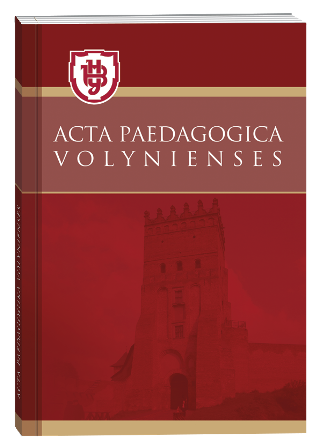CZECH REPUBLIC AND UKRAINE: REALITIES OF PREPARATION BACHELORS OF DESIGN
DOI:
https://doi.org/10.32782/apv/2024.3.14Keywords:
design, graphic design, training, competence, artistic and design competence, projectAbstract
The article examines the peculiarities of design education in the Czech Republic from the possibility of admission to the details of the educational process. The rules of admission to universities for design courses are characterized. The advantages of Czech education are identified, which deserve attention in Ukrainian higher school education for the training of specialists in graphic design. Information provided about the best universities in the Czech Republic, where you can get a designer’s education. It is noted thats an integral part of the planning strategy of the priority areas of education and development of labor resources in the Czech Republic is accessibility to all levels of education; introduction of new progressive programs; optimization of educational management; availability of effective results of monitoring the system of teaching. In the context of the conducted research, it was established that design education in the Czech Republic is quite developed and accessible to international students. The main areas of design education were defined. All the universities work according to the Bologna system. Therefore, those seeking education acquire both theoretical knowledge and practical skills and abilities that allow successful implementation in the future as a professional in this field. Such preparation provides applicants of higher education the needed level of formation of both hard skills and soft skills and helps increase the effectiveness of the educational process. The learning process is similar to learning in Ukrainian universities, where the dominant is the practical orientation, which combines work on artistic concepts with design and technical work. It was determined that among the advantages of studying at the «Graphic design» there is an opportunity for both Czech and Ukrainian education seekers to get free education; European-style higher education diploma; solid portfolio; implementation of various projects; implementation in the professional sphere. It is emphasized that the process of training of graphic designers is dominant project education, which allows to form artistic and project competence of future specialists due to the presence of artistic skills, creativity of ideas, analytical abilities, communicative and project skills in general.
References
Бондарчук Н.О. Державна політика Чехії в галузі освіти: стан і тенденції розвитку: автореф. дис... канд. наук з держ. управління: 25.00.02 Акад. муніцип. упр. К., 2008. 20 с.
Дрожжина Т. В. Євроінтеграційні процеси в освіті. Чеський досвід // Управління шк. 2009. № 11. С. 24–27.
Дутін Ц. Педагогічні аспекти професійної підготовки майбутніх фахівців з графічного дизайну // Вісник університету імені Альфреда Нобеля. Серія «Педагогіка і психологія». Педагогічні науки. 2020. № 2 (20). С. 188–193.
Dvořakova M. Projektove vyučovani v česke škole. Praha, 2009. 160 s.
Кисіль Н.Р. Особливості вищої освіти в Чехії та в Україні: сучасний досвід // Український педагогічний журнал. 2018. № 2. С. 22–26.
Кнодель Л. Становлення та розвиток освіти в Чехії // Директор шк. Україна. 2007. № 11. С. 63–69.
Красняков Є. В. Європейський досвід Чеської республіки в галузі освіти: досвід для України // Вісник НАДУ. 2015. № 4. С. 104–111.
Плужник О., Н. Муранова. Актуальні проблеми в системі освіти: загальноосвітній навчальний заклад – доуніверситетська підготовка – вищий навчальний заклад : зб. наук. праць матеріалів ІІІ Всеукраїнської науково-практичної конференції, 27 квітня 2017 р., м. Київ, Національний авіаційний університет / наук. ред. Н. П. Муранова. К : НАУ, 2018. С. 195–198.
Степанець Н.П. Досвід розвинутих країн у підготовці фахівців для сфери туризму: компетентісний підхід // Географія та туризм: Наук. зб. К.: Альтерпрес, 2012. Вип. 20. С. 19–25.
Степура Л. Вивчення інноваційних процесів в освіті і науці Франції та Чехії // Освіта України. 2011. 28 берез. (№ 23–24). С. 9.







